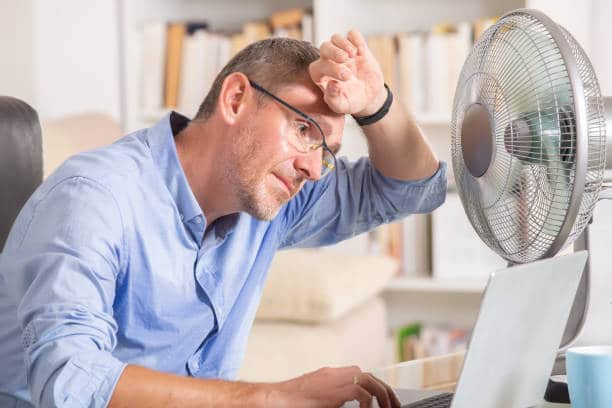
It happens to most homeowners at some point – you flip the AC on during a heatwave only to be blasted with warm, stale air. Your AC system failed, leaving you hot, sticky, and wondering what to do next. Don’t panic! With some quick troubleshooting and an emergency AC technician on speed dial, you can get through this.
Assess The Situation
Before placing a stressful call to an emergency AC repair company, do some initial troubleshooting yourself. First, ensure your thermostat is working properly and set to cooling mode. Verify the temperature is actually set lower than the current room temperature. Inspect your thermostat thoroughly – make sure it has power, the display is illuminated, and the batteries are fresh. Replace batteries first if uncertain.
For smart thermostats, check if they lost the WiFi connection, which could prevent remote operation. Reboot the device and reconnect it to WiFi in your app or browser portal. If you have a thermometer, use it to double-check that the home’s real temperature matches what is displayed on your thermostat. Contact the thermostat manufacturer if pairing issues persist.
Next, visually inspect the outdoor AC components, including the condenser unit and compressor. See if the internal fan spins when the AC turns on. Observe through the fan grille, not by peering directly in. Use caution not to place fingers, tools or other objects near condenser fan blades or internal components for safety reasons. If the condenser unit hums but the fan doesn’t spin, there may be a seized motor issue. The lack of any operation noise indicates broader electrical problems like tripped breakers, disconnected wires, fuse burnouts, or capacitor failures.
Examine all exterior wires, piping, and insulation for damage from lawn equipment, animals, weather events, or other interference that could cause malfunctions. Wires should connect firmly, insulation should be intact, and piping should lack leaks or dents. Do you see damage? Turn the AC off at the breaker until a professional inspection. Attempting quick fixes while the AC operates could worsen issues or bring harm.
What if all external components like condenser fans and wires seem fine, yet warm air still flows indoors? The issue may rest with indoor components like blower fans, ductwork, or vents, but assessment requires an HVAC pro.
Call In The Pros
Do-it-yourself troubleshooting only goes so far when an AC system fails. The true culprit is often complex – low refrigerant, clogged drain lines, faulty control boards, busted compressors, etc. Let a seasoned HVAC technician handle in-depth diagnostics and repair next steps. Continuing to run a broken AC system will likely worsen damage over time and spike energy bills needlessly.
When selecting an emergency AC company, read reviews and choose an established local business with specific expertise in your AC brand if possible. Only consider companies that offer verified licenses, insurance coverage, and sufficient staff to respond quickly 24/7. Ask what their emergency visit fees include and policies on repairs. Some companies offer value-adds like extended warranty packages on repaired components for return customer peace of mind. Consider all these factors when vetting providers in a crisis scenario. Reputable AC pros with emergency expertise can get your home cooled fast.
With some practical coping methods, the sweaty in-home wait for an emergency AC repair call goes quicker. Before you know it, your home’s oasis of cool air returns! Stay calm and carry on by following these tips.
David Harrison
Related posts
Stay connected
Today's pick
- Things to Remember While Designing Your Custom Modular Kitchen in GurgaonGurgaon now known as Gurugram is the second largest city in the state of Haryana and is a reflectiossn of an ideal modern city with futuristic goals. Witnessing rapid urbanization, it has also emerged as a hub for contemporary homes, with homeowners seeking innovative and... The post Things to Remember While Designing Your Custom Modular […]
